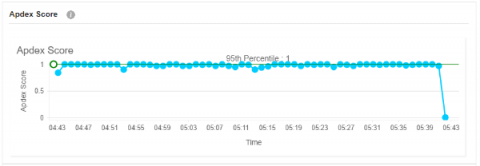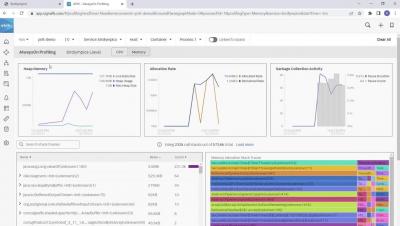Operations | Monitoring | ITSM | DevOps | Cloud
Java
USU Software Asset Management is Verified for Data Discovery of JAVA Software
Optimize Java Application Performance by Monitoring JVM Metrics
Although Java has been around for 27 years, enterprise applications still favor it as one of their preferred platforms. Java's functionality and programming flexibility increased concurrently with technological advancement, keeping it a useful language for more than 25 years. Outstanding examples of this progression include new garbage collection algorithms and memory management systems.
Import CSV Data into InfluxDB Using the Influx CLI and Python and Java Client Libraries
With billions of devices and applications producing time series data every nanosecond, InfluxDB is the leading way to store and analyze this data. With the enormous variety of data sources, InfluxDB provides multiple ways for users to get data into InfluxDB. One of the most common data formats of this data is CSV, comma-separated values. This blog post demonstrates how to take CSV data, translate it into line protocol, and send it to InfluxDB using the InfluxDB CLI and InfluxDB Client libraries.
How to install a Site24x7 APM Insight Java agent in a Spring Boot application
How to install a Site24x7 APM Insight Java agent in a WildFly server 8.x and above-standalone setup
Java application performance metrics 101
Since it first emerged, Java has had a phenomenal rise in usage and popularity. It’s ability to be robust and platform-independent has enabled it to rule the application development world by providing internet solutions for businesses across industries. Any organization that runs its mission-critical applications on Java shouldn’t be turning a blind eye towards understanding the importance of application performance monitoring.
5 common Java performance problems and how to avoid them using java monitoring tools
Java is one of the most widely used programming languages and it’s often used by back-end developers as a server-side language. It’s used by über-famous applications like Spotify, Twitter, Signal, and Cash App. Java has evolved immensely over the years and in addition to being easy to write, compile, and debug, it’s also more secure, portable, and effective in memory management compared to other languages.
Memory Profiling for Java Applications, a Splunk APM Product Walkthrough
Top 7 Java Performance Metrics to Monitor
Today, almost any metric you can think of can be tracked down and reported, as opposed to the past when the software was traditionally provided in boxes and its performance in production could not be predicted. The issues we are currently facing are not due to a lack of information, but rather to an abundance and scale of information. This becomes significantly more difficult to manage when dozens or even hundreds of servers are in use.











